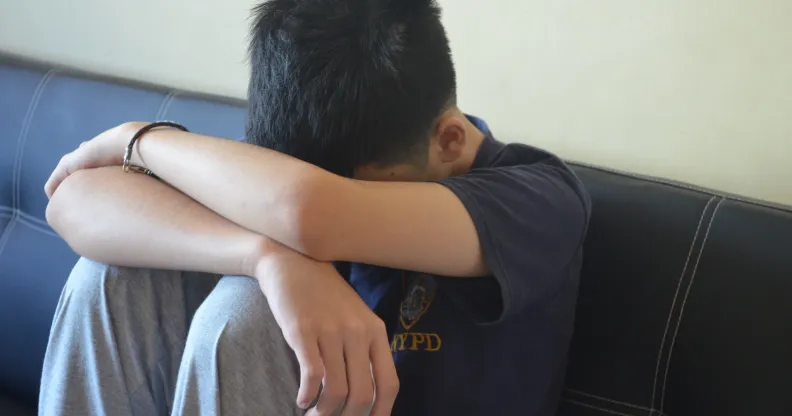Gay and bi youth four times more likely to self-harm than straight people

New search has found that lesbian, gay and bisexual young people are four times more likely to self-harm than their straight peers. (Pexels)
Gay, lesbian and bisexual young people experience higher rates of depressive symptoms—and are four times more likely to self-harm—according to a new study.
The study, led by University College London, found that lesbian, gay and bisexual (LGB) youth are more likely than their heterosexual counterparts to have symptoms of depression from the age of ten, which then persist into their early twenties.
The research, which surveyed 4,828 people born in the 1990s, concluded that by the age of 18 LGB people are twice as likely to fit the criteria for a clinical diagnosis of depression.
Lesbian, gay and bisexual youth more likely to self-harm and have symptoms of depression
It found that, at the age of 21, LGB individuals were more than four times as likely to self-harm with “suicidal intent.”
The data, published on Tuesday in The Lancet Child & Adolescent Health, also concluded that depressive symptoms increase at a higher rate through adolescence for LGB people than for straight individuals.
A spokesperson for the research told PinkNews it did not include a question to specifically identify trans people because it focused on sexuality and not gender identity.
“Clinicians should use language and questions that reflect openness about sexuality, and not assume heterosexuality.”
—Alexandra Pitman, co-author of the study
However, the spokesperson added that these individuals may still be included in the data, “but they wouldn’t have been identified as such.”
Some 625 people (13 percent) of individuals in the survey identified with a sexuality other than heterosexuality.

The study found lesbian, gay and bisexual youth are four times more likely to self-harm than their heterosexual counterparts. (Wikimedia Commons)
Authors of study: Discrimination may be a factor in higher self-harm rates in lesbian, bisexual and gay people
Researchers behind the study said that, in light of the findings, mental health workers and doctors should not assume that patients are straight—and instead use more inclusive language or treatment methods.
“Our findings suggest that clinicians who encounter young people, whether in primary or secondary care, sexual health services, the emergency department, or as school nurses, should be mindful about sexuality in considering the wider context for depressive symptoms or self-harm,” said co-author of the study Alexandra Pitman, a senior clinical lecturer at UCL’s psychiatry department.
“Clinicians should use language and questions that reflect openness about sexuality, and not assume heterosexuality, and they should be aware that a young person who identifies as not exclusively heterosexual may have struggled with mental health problems from early in development.
The study’s first author Madeleine Irish, a researcher at King’s College London, said that factors such as discrimination could play a part in the higher rates of depressive symptoms among LGB youth.
“As these differences emerge so early, we suspect that a sense of feeling different might affect mental health before children can even articulate that difference,” Irish said.
“As they progress through adolescence, a range of stressors could be involved, such as discrimination, stigmatisation, feelings of loneliness, social isolation, shame or fear or rejection, including at home or at school.”
Self-harm study builds on previous research
The latest study builds on the findings of previous research, which has concluded that LGBT+ people have higher rates of depression and suicidal ideations.
In November, another study found that 65 percent of lesbian, gay and bisexual students had self-harmed.
Also in November, a Stonewall report found that half of LGBT+ people have had depression in the past year.
A 2016 study by the Centers for Disease Control and Prevention found that lesbian, gay and bisexual (LGB) young people are almost three times as likely to seriously contemplate suicide than heterosexual youths.
It also found that LGB youth were five times more likely to have attempted suicide than heterosexual young people.
If you are in the UK and are having suicidal thoughts, suffering from anxiety or depression, or just want to talk, call the Samaritans on 116 123. If you are in the US, call the National Suicide Prevention Line on 1-800-273-8255.

